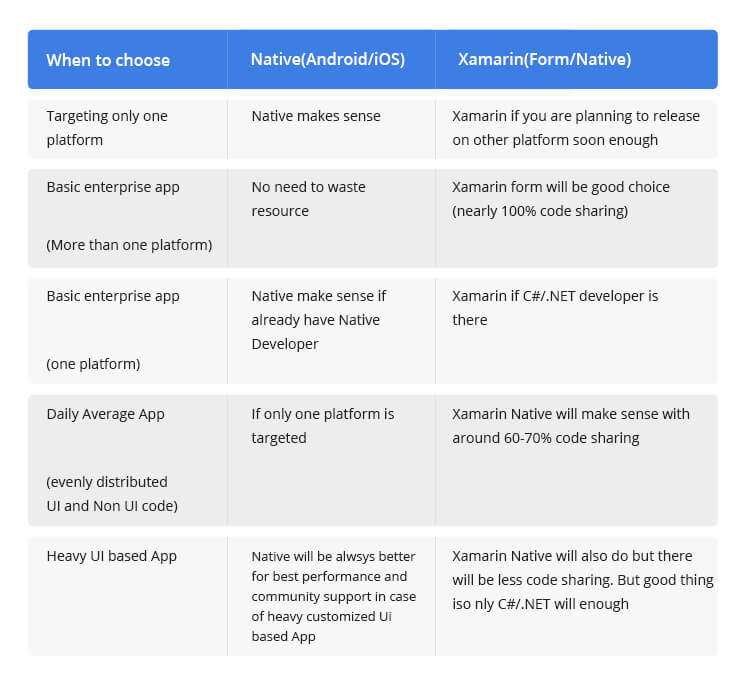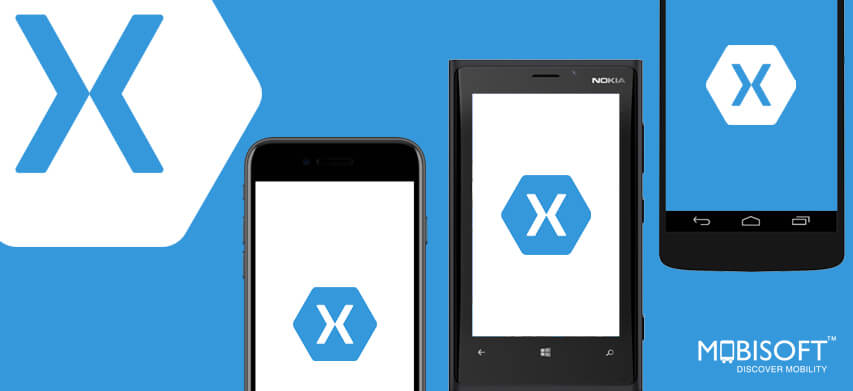- Absolute Binding for the Underlying SDKs: Xamarin has binding for almost the whole underlying platform SDKs in both Android and iOS. In addition, these bindings are strongly-typed, that means they can be navigated and used easily, and deliver strong type checking during compile-time and development. This results in fewer runtime errors and high-quality apps.
- Objective-C, C, C++ and Java Interop: Xamarin provides you the facility to directly invoke Objective-C, C, C++, and Java libraries, allowing you to use a wide range of Third-party code that has already been built. Moreover, Xamarin provides binding projects that enable you to simply bind native Java and Objective-C libraries using a declarative syntax.
- Modern Language Constructs: Code for Xamarin apps are written in C#, a modern language that contains notable improvements over Java and Objective-C like Functional Constructs, Dynamic Language Features, sophisticated Generics, Parallel Programming Features, and more.
- Mobile Cross Platform Support: Apps can be written to share about 90% of their code, and the Xamarin.mobile library provides an integrated API to obtain usual resources across all the 3 platforms (Android, iOS, Windows). This can considerably reduce both cost of development and marketing time for app developers that focus on these popular mobile platforms.
- Modern IDE: Xamarin uses Visual Studio in Windows and Xamarin Studio in Mac OS X. Both of these are modern Integrated Development Environments that include features like a sophisticated Project and Solution management system, code auto completion, an integrated source control, comprehensive project template library, and many others.
- Base Class Library (BCL): Xamarin app uses the .NET BCL, a vast collection of classes that have smooth and comprehensive features like powerful XML, Serialization, Database, String, IO, and Networking support, and etc. Moreover, actual C# code can be compiled to be used in an application providing access to thousands of libraries that will allow you to do things that are not covered in the BCL earlier.
- One time coding for all platforms really saves the tremendous time of development and single code base for all platforms gives assurance of easy maintenance.
- Different developer options like logging, distribution, crash analytics, quick support for newer version of native operating systems and Xamarin profiler makes developers’ life easy.
- Xamarin allows two-way development depending on requirement, like if maximum code sharing is needed then choose “Xamarin Forms” and if fancy UI is needed then choose “Xamarin Native”.
- Using Xamarin, not only we can develop a mobile application but there is a variety of other application development available like Desktop applications, tvOS applications, Smartwatch and Wearable apps, SpriteKit games, OpenglES games and much more.
- Xamarin components, Xamarin Insights, Xamarin Test Cloud, HockeyApp, Xamarin University really solve the measurable problems in mobile app development.
 The Xamarin app development platform has a number of elements that helps you to develop apps for both Android and iOS:
The Xamarin app development platform has a number of elements that helps you to develop apps for both Android and iOS:
- C# Language: Allows you to use an easy syntax and refined features like Linq, Generics and the Parallel Task Library.
- Mono .NET Framework: Comes up with a cross-platform implementation of the substantials features in Microsoft’s .NET framework.
- Compiler: Depending on a platform, it produces a native application or an integrated runtime and .NET application. The compiler also executes various optimizations for mobile deployment such as linking away unused code.
- IDE Tools: The Xamarin in Visual Studio and the Xamarin Studio IDE allow you to create, build and deploy Xamarin projects.
- Data Layer: Non-volatile data persistence, tends to be an SQLite database but can be implemented with XML files or any other appropriate procedure.
- Data Access Layer: Wrapped around the Data Layer that provides the access of Create, Read, Update, Delete (CRUD) to the data without revealing implementation feature to the caller.
- Business Layer: consists of business logic and business entity definitions (the Model).
- Service Access Layer: Used for accessing the cloud services: from compound web services (JSON, REST, WCF) to simple recovery of images and data from remote servers. Encloses the networking actions and provides a clear API to be consumed by the UI and Application layers.
- Application Layer: Code that is usually platform specific (not mostly shared across platforms) or code that is fixed to the application (not mostly reusable). A good test of if the code is to be placed in the UI Layer versus the Application Layer is to determine if the class has any actual display controls or it could be shared across multiple devices or screens.
- User Interface (UI) Layer: The User Interface layer contains controllers, widgets, and the screens that manage them.
- MVVM (Model, View, ViewModel): The MVVM pattern is popular for frameworks that solve a data binding problems in an easy way. It was introduced by XAML-enabled SDKs such as Silverlight and Windows Presentation Foundation (WPF); where the ViewModel behaves as a go-between between the user interface (View) and data (Model) via commands and data binding.
- MVC (Model, View, Controller):MVC is a structural pattern which keeps separation in each layer. The model is basically a completely optional piece and thus, the core of comprehending this pattern depends on View and Controller.
- Facade Pattern:Also known as Manager Pattern, provides an entry point for complex work. For instance, in a Task Tracking app, you have a TaskManager class with methods such as GetTask(taskID),GetAllTasks(), SaveTask (task) , etc. The class TaskManager provides a Façade to the inner working of actually retrieving/saving of tasks objects.
- Singleton: Using Singleton pattern you can ensure the single instance of particular class ever exists all the time. For instance, while using SQLite in a mobile app, you just want one instance of the database. Using the Singleton pattern you can ensure this in a simple way.
- Provider: Provider pattern is used for dependency injection and code re-usability. Shared code can be written against an abstract class or interface, and concrete implementations that are platform-specific can be written and moved in after using the code.
- Async: Async pattern works as the name suggests to perform long-running operations in the background thread while the current thread continues to process and gets a response from the background thread, and then upgrades the User Interface (UI) when data and/or state is returned.
 Xamarin has emerged as one of the most robust tools for cross-platform app development. With the help of the Xamarin platform, mobile app developers can now build iOS, Android, and Windows Phone applications using the single C# codebase. Confidently, we can say that Xamarin has become a preferred ‘choice’ for cross-platform app development because of its code sharing and collaboration capabilities, platform specific UI and API integrations, rapid development and cost effectiveness.
Click Here To Know More
Xamarin has emerged as one of the most robust tools for cross-platform app development. With the help of the Xamarin platform, mobile app developers can now build iOS, Android, and Windows Phone applications using the single C# codebase. Confidently, we can say that Xamarin has become a preferred ‘choice’ for cross-platform app development because of its code sharing and collaboration capabilities, platform specific UI and API integrations, rapid development and cost effectiveness.
Click Here To Know More Author's Bio

Nitin Lahoti is the Co-Founder and Director at Mobisoft Infotech. He has 10+ years of experience in Design, Business Development and Startups. His expertise is in Product Ideation, UX/UI design, Startup consulting and mentoring. He prefers business readings and loves traveling. Follow him @nitinlahoti


 June 5, 2017
June 5, 2017


